Find out the historical significance of the Ho Chi Minh Mausoleum. Learn the hours of visiting, the dress code, and what you expect inside. Pay your respects to the Beloved Man of Vietnam.
Who is Ho Chi Minh?
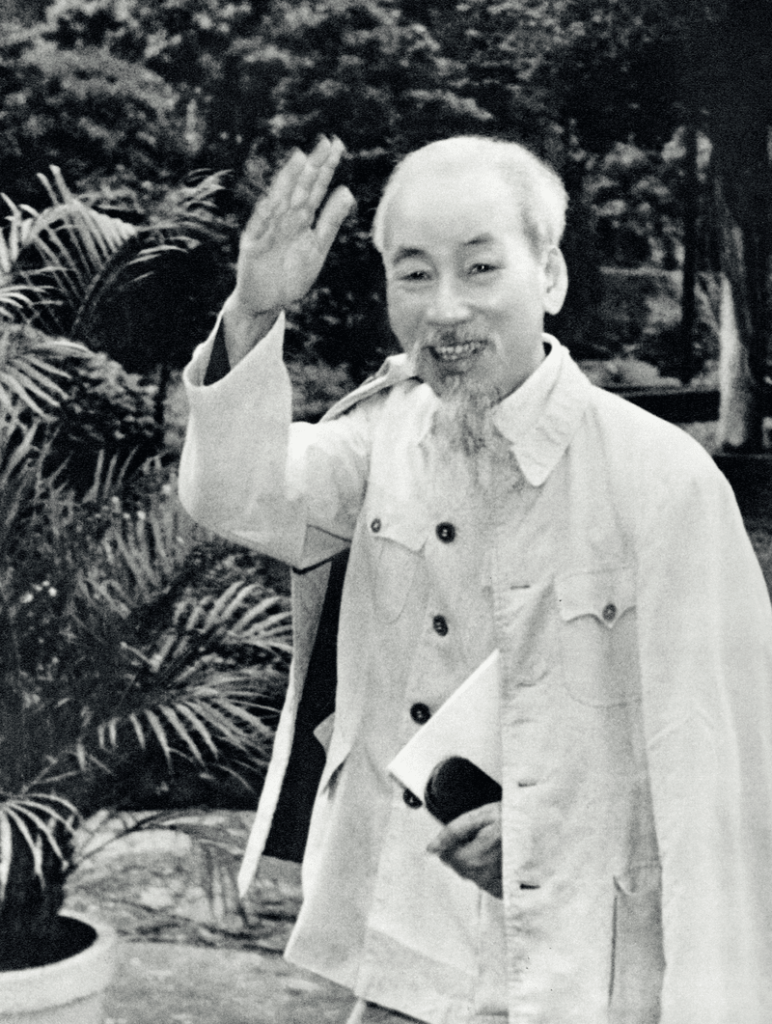
Ho Chi Minh, the great father of the modern nation, is one of the prominent figures in Vietnamese history. His leadership and tireless revolutionary spirit gave a colossal effort to free Vietnam from colonial repression and pave the way for the establishment of an independent socialist state.
He was born Nguyễn Sinh Cung in 1890 in a central province called Nghe An. These would be his first steps into a very harsh reality of French amenity. It was from these experiences that he developed an eternal enthusiasm for anti-imperialism and an unwavering commitment to the liberation of his country. With the quest for knowledge and inspiration, he traveled the world with a close acquaintance of varying cultures and ideologies. The meetings with different societies and revolutionary movements helped him shape his world view and, moreover, his strong belief in Vietnamese people’s right to self-determination.
Using a blend of nationalism with communist ideas, Ho Chi formulated the Indochinese Communist Party in 1925, which ushered in a hugely important development in creating united resistance against French colonial rule. Under the pseudonym “Nguyen Ai Quoc” (Nguyen the Patriot), he spent tremendous effort and gave many speeches in favor of independence for Vietnam. He is the unifying personality for his compatriots because he is so charismatic and unambiguously dedicated.
The Vietnam government built a vast mausoleum to recognize all of the work Ho Chi Minh did for the nation. This grand memorial stands as a full story to his brilliant life and a place of pilgrimage for many Vietnamese and international visitors who pay their respect to the father of their country.
Where is Ho Chi Minh Mausoleum? How to Get There?
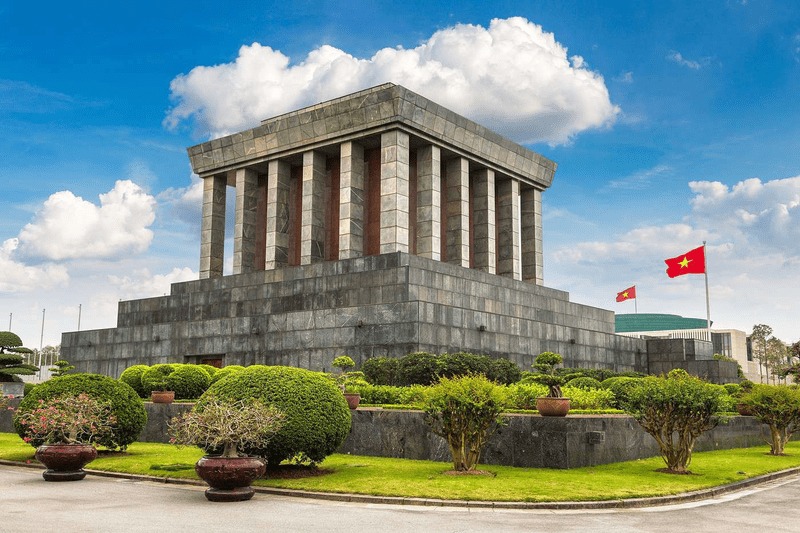
The President Ho Chi Minh Mausoleum is strategically situated in Hanoi, the capital city center of Vietnam, within the center of Ba Dinh Square. Every visitor in Hanoi, therefore, should make a date to visit this historic site.
Location: 25 Hung Vuong, Dien Ban, Ba Dinh, Hanoi
Getting There:
- Walking: If you are staying in the busy Old Quarter, it is about 30 minutes of pleasant walking time to the mausoleum. It’s also a nice walk that truly immerses you in the local atmosphere.
- Taxi or Motorbike: You can take a taxi or motorbike if you want to get to the destination fast. The travelers can choose to take traditional taxi and motorbike services or book a trip on ride-sharing apps such as Grab, Xanh SM, Be, etc. Keep the huge traffic, especially at peak hours, in mind.
- Public Bus: A number of bus routes pass near Ba Dinh Square such as 09, 22, 33, 45, 50, etc. This is the cheapest way (from 8.000 VND), but it might include lots of hassle and take a bit longer than other modes of transport, especially during peak hours.
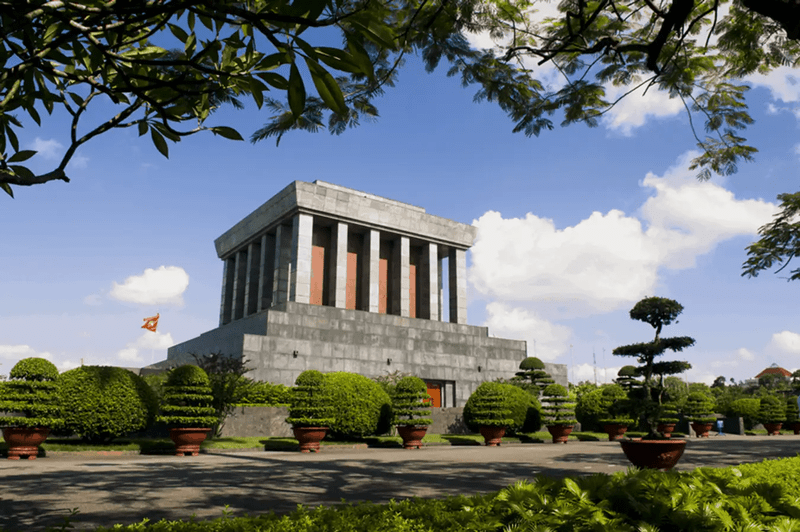
The History and Significance of The Mausoleum of Ho Chi Minh
The Ho Chi Minh Mausoleum in Hanoi, is solemn and monumental in its position to bear witness to this great life and splendid testament that Vietnam has ever had. Building from 1973 to the end of 1975, the whole work here is done under the Soviet neoclassical style of socialist realist influences. This option used in architecture reflects the relationship between Vietnam and the Soviet Union at that time. The mausoleum is designed somewhat similarly to the Lenin Mausoleum in Moscow, given distinctively Vietnamese features.
With gray granite steps, the structure of the Ho Chi Minh mausoleum is square, its exterior is gray granite, and its facade is adorned with white marble tiles, which represent purity and reflect the area of Vietnam. The top of the structure bears a gray granite roof with a red star, which represents a communist star and a symbolic representation of the socialist approach that the nation adopted. The structure of this mausoleum is a strong impression of Vietnamese culture inbred with socialist imperialism.
The tomb is more than just a tomb; it is a powerful sign of the journey that the Vietnamese have traveled. This speaks about the aspiration and the realization of the nation. Nowadays, millions of Vietnamese people pay their respects, and thousands of international visitors gather here. It became for them a pilgrimage site where one could connect with the history and spirit of a nation.
Ho Chi Minh-mausoleum photos
President Ho Chi Minh’s Embalmed Body
So solemn was the visit to the Ho Chi Minh Mausoleum that it really had the effect of his actually being present. At the center lies the embalmed Ho Chi Minh mausoleum body in a glass sarcophagus. It was a piece of preservation so extraordinary that allows one to really pay respects to the man who shaped this nation.
You can feel a reverent atmosphere as you approach the central chamber. The embalmed body Ho Chi Minh mausoleum lies in state, evoking the great impact that this leader of leaders has had on Vietnam. The atmosphere allows for the visitor to contemplate Ho Chi Minh’s life and his works.
Please remember that photographs are not allowed inside Ho Chi Minh mausoleum, as it is a somber place to be respected. Indeed, there are also no chattering groups of tourists in the building, so respect is demanded of visitors to both the building and the man it holds.
Ho Chi Minh mausoleum hours
The Highlights of Ho Chi Minh Mausoleum in Hanoi
While the Ho Chi Minh Mausoleum is only a shrine, it is also a cultural and historical complex intended to provide insight pertaining to Vietnam’s past.
Inside Ho Chi Minh Mausoleum
The mausoleum itself is the centerpiece of the complex, containing Ho Chi Minh’s embalmed remains in state. Given the many influences that the leader had on the nation, there is an attitude of solemnity and respectfulness. No one is allowed to talk at all, and there is a very strict dress code for visitors.
Outside Ho Chi Minh Mausoleum
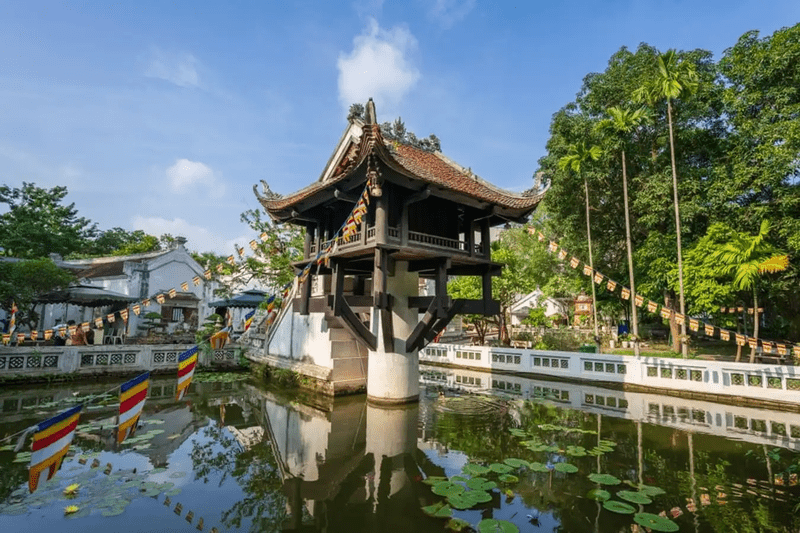
Besides the mausoleum, other historical and cultural assets comprise:
- Ho Chi Minh’s Stilt House: This humble abode gives a glimpse into the simple life of this reverend leader. It has been built in traditional Vietnamese architectural style on stilts and hence gives a clear contrast to the grand mausoleum.
- One Pillar Pagoda: An exotic architecture, a Buddhist temple enshrined on the top of only one wooden pillar. It is an oasis in the middle of the city, allowing it to remain peaceful for a visitor.
One Pillar Pagoda
- Presidential Palace: The residence of the French colonial rulers is now turned into a museum portraying the history of Vietnam. It details how Vietnam has moved from a colonial regime into the independence of a nation.
These locations, coupled with the Ho Chi Minh mausoleum facts, provide a broad view of Vietnamese history and the life of its revered leader.
Read more: Bun Dau Mam Tom: The taste in the past and the present
Essential Information For Tourists Visiting Ho Chi Minh Mausoleum
Careful planning beforehand will ensure a smooth and respectful visit to the Mausoleum of Ho Chi Minh.
Ho Chi Minh Mausoleum’s opening hours
The mausoleum is open to the public from 7:30 AM to 11:00 AM daily, with the exception of Mondays and Fridays. However, it’s crucial to note that these hours can vary based on the day.
- Tuesday and Thursday: The mausoleum typically opens at 7:30 AM and closes at 10:30 AM.
- Saturday, Sunday and holidays: Opening hours are from 8:00 AM to 11:00 AM.
Arrive early to avoid the long queues, especially during peak tourist seasons.
Ho Chi Minh Mausoleum’s entrance fee
There is a small fee charged for the Ho Chi Minh mausoleum price. Since these charges are, quite logically, subject to change, one could try to further inquire about the exact charge applicable at the time of your visit.
Ho Chi Minh Mausoleum’s rules
To maintain the solemn atmosphere and respect for the late President Ho Chi Minh, visitors must follow some specific guidelines:
- Ho Chi Minh mausoleum dress code: Shoulders and knees must be covered.
- Photography: Taking Ho Chi Minh mausoleum photos of any kind is forbidden inside the mausoleum.
- Behavior: Keep silent. Behave properly. Strictly forbidden to shout or make noise.
These are ways that will guide you to have a worthwhile visit to this great president Ho Chi Minh Mausoleum.
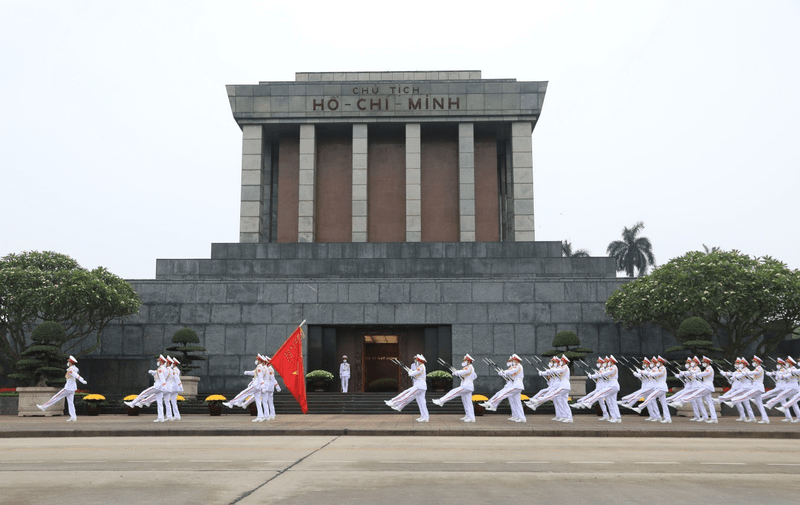
A visit to Ho Chi Minh Mausoleum is highly deep and full of information about Vietnamese heritage and culture. If you appreciate what this place symbolizes and how it works, you could be paying respect to a great leader while enjoying yourself in the Hanoi Tours provided by Lily’s Travel.
Read more: Ha Noi Travel: 6 tours in the night for you to discover “the difference of Hanoi”















